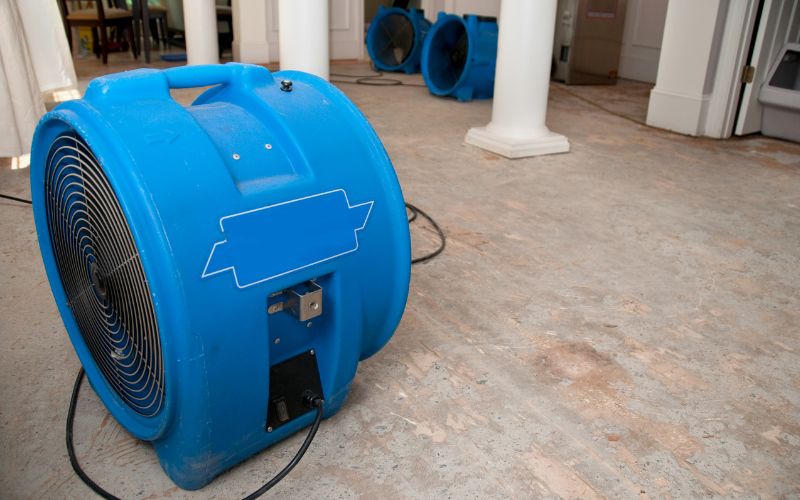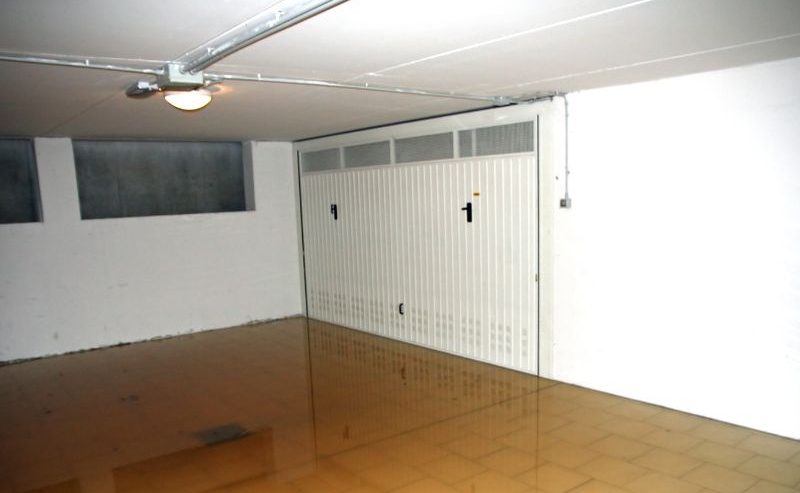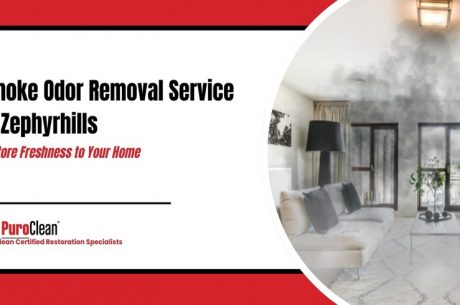
Image by ChiccoDodiFC from Getty Images on Canva
Sewer backup cleaning services are essential when unexpected flooding occurs in your home due to clogged pipes or sewer system failures. It’s important to act quickly to minimize damage and ensure a safe environment for your family. A sewer backup can cause health risks, structural damage, and long-term issues if not addressed properly.
In this guide, we’ll walk you through the necessary steps to safely clean and restore your property after a sewer backup. From ensuring safety first to drying and dehumidifying the area, these actions will help prevent further damage and create a cleaner, safer space for your home. Keep reading to learn how to tackle a sewer backup effectively.
What Are the Common Causes of Sewer Backup?
There are several reasons sewer backups occur, causing inconvenience and potential damage. Understanding these causes can help homeowners take preventive steps and maintain their plumbing systems effectively. Below are the most common causes of sewer backups:
- Tree Root Intrusion: Tree roots can invade sewer lines, causing blockages and pipe damage.
- Clogged Pipes: Accumulation of grease, hair, or debris restricts water flow and leads to backups.
- Aging Sewer Systems: Older pipes deteriorate over time, increasing the risk of cracks and leaks.
- Heavy Rainfall or Flooding: Excess water overwhelms sewer systems, pushing sewage back into homes.
- Improper Disposal of Waste: Flushing non-biodegradable items like wipes or diapers clogs pipes.
- Broken or Collapsed Sewer Lines: Physical damage to sewer lines disrupts the flow of wastewater.
Step-by-Step Guide to Sewer Backup Cleanup
Sewer backups can cause significant damage and pose serious health risks if not addressed properly. A systematic approach to cleanup can help you tackle the situation effectively while ensuring safety and minimizing damage. Follow these six essential steps for a thorough cleanup.
1. Ensure Safety First
Before starting any cleanup, prioritize safety by wearing protective gear such as rubber gloves, boots, goggles, and masks to prevent direct contact with contaminated water. If the backup has affected areas near electrical sockets or appliances, turn off the power supply to avoid electrocution risks. Additionally, keep children and pets away from the affected areas to reduce exposure to harmful pathogens. Carefully evaluate the scope of the damage before proceeding to ensure you can manage the situation without putting yourself at risk.
2. Stop the Water Flow
Identify and stop the source of the sewer backup to prevent further flooding. Locate your main water shutoff valve and turn it off if necessary. In some cases, the problem may stem from a clogged drain or blocked sewer line, which will require immediate attention. Stopping the water flow quickly is crucial to avoid additional damage and contamination. If you cannot locate the source or shut it off, contact a plumber immediately for assistance to ensure the issue is contained.
3. Remove Standing Water
Standing water can quickly lead to structural damage and mold growth, so it’s essential to remove it as soon as possible. Use a wet-dry vacuum, submersible pump, or buckets to extract water from floors and other affected areas. Be thorough, ensuring that hidden pockets of water, such as under furniture or in wall cavities, are also addressed. Proper water removal not only reduces the risk of further damage but also prepares the area for effective cleaning and disinfection in the next steps.
4. Clean and Disinfect Surfaces
Once the standing water is removed, thoroughly clean all surfaces that came into contact with the sewage. Use a detergent solution to scrub walls, floors, and other affected areas to remove visible dirt and grime. After cleaning, disinfect with a bleach solution (1 cup bleach to 1 gallon of water) to eliminate harmful bacteria and viruses. Pay special attention to areas prone to contamination, such as baseboards, bathroom fixtures, and tile grout. This step is critical to restoring a safe and sanitary environment.
5. Dispose of Contaminated Items
Sewer water often ruins items it touches, so you’ll need to dispose of anything that cannot be properly cleaned or restored. This includes porous materials like carpets, upholstered furniture, mattresses, and non-washable fabrics. Bag these items securely using heavy-duty garbage bags and follow local guidelines for hazardous waste disposal. Be mindful of items that can be salvaged, such as plastic or metal objects, which can often be sanitized and reused. Proper disposal lessens the risk of cross-contamination and promotes a cleaner environment.
6. Dry and Dehumidify the Area
After cleaning and disinfecting, focus on drying the area fully to prevent mold and mildew growth. Open windows and doors for ventilation, and use fans, dehumidifiers, and heaters to accelerate the drying process. Pay special attention to hidden or hard-to-reach areas, such as behind walls or under floorboards. Inspect the space regularly during the drying phase to ensure no moisture is left behind. Once the area is completely dry, consider applying mold-resistant treatments to further protect your home from future issues.
When to Call for Sewer Backup Cleaning Services
Call professional sewer backup cleaning services if the situation is extensive, involves raw sewage, or poses significant health risks. Professionals are equipped to handle severe contamination, remove hazardous waste, and sanitize the area thoroughly. If the backup has reached multiple rooms, affected structural elements, or involves complex plumbing issues, expert intervention ensures proper resolution. Additionally, contact a professional if you’re unsure about safely cleaning the area yourself or suspect underlying sewer line problems that require immediate repair to prevent future backups.
Frequently Asked Questions

Image by Ceneri from Getty Images Signature on Canva
What health risks are associated with sewer backups?
Sewer backups expose you to harmful pathogens, including bacteria, viruses, and parasites, which can cause gastrointestinal, respiratory, or skin infections. Direct contact with contaminated water or surfaces increases the risk. Using protective gear during cleanup and thoroughly disinfecting affected areas helps mitigate these health hazards and ensures a safer environment.
How long does it take for sewer backup cleaning services to complete the cleanup?
The time needed for sewer backup cleaning services depends on the severity of the backup and the affected area. Minor backups may take a few hours, while more extensive cleanups involving multiple rooms or complex plumbing issues could take a day or more. Professionals will give an estimated timeline based on their initial assessment.
How can I prevent future sewer backups in my home?
Regular maintenance is key to preventing sewer backups. Schedule annual inspections for your plumbing system, avoid flushing non-biodegradable items, and properly dispose of grease and waste. Installing a backwater valve can also provide added protection by preventing sewage from flowing back into your home during heavy rainfall or system overloads.
Conclusion
Sewer backup cleaning services are essential to restore your home and protect your family from health risks and further property damage. Following the proper steps, from ensuring safety to thorough cleaning and drying, can help restore your home to a safe and healthy environment. Taking preventive measures will also reduce the risk of future backups and costly repairs.
If you’re dealing with a sewer backup, PuroClean Zephyrhills is here to help. Our expert team provides fast, reliable cleanup services to restore your home safely. Contact us today to get the assistance you need and ensure your home is fully restored.



